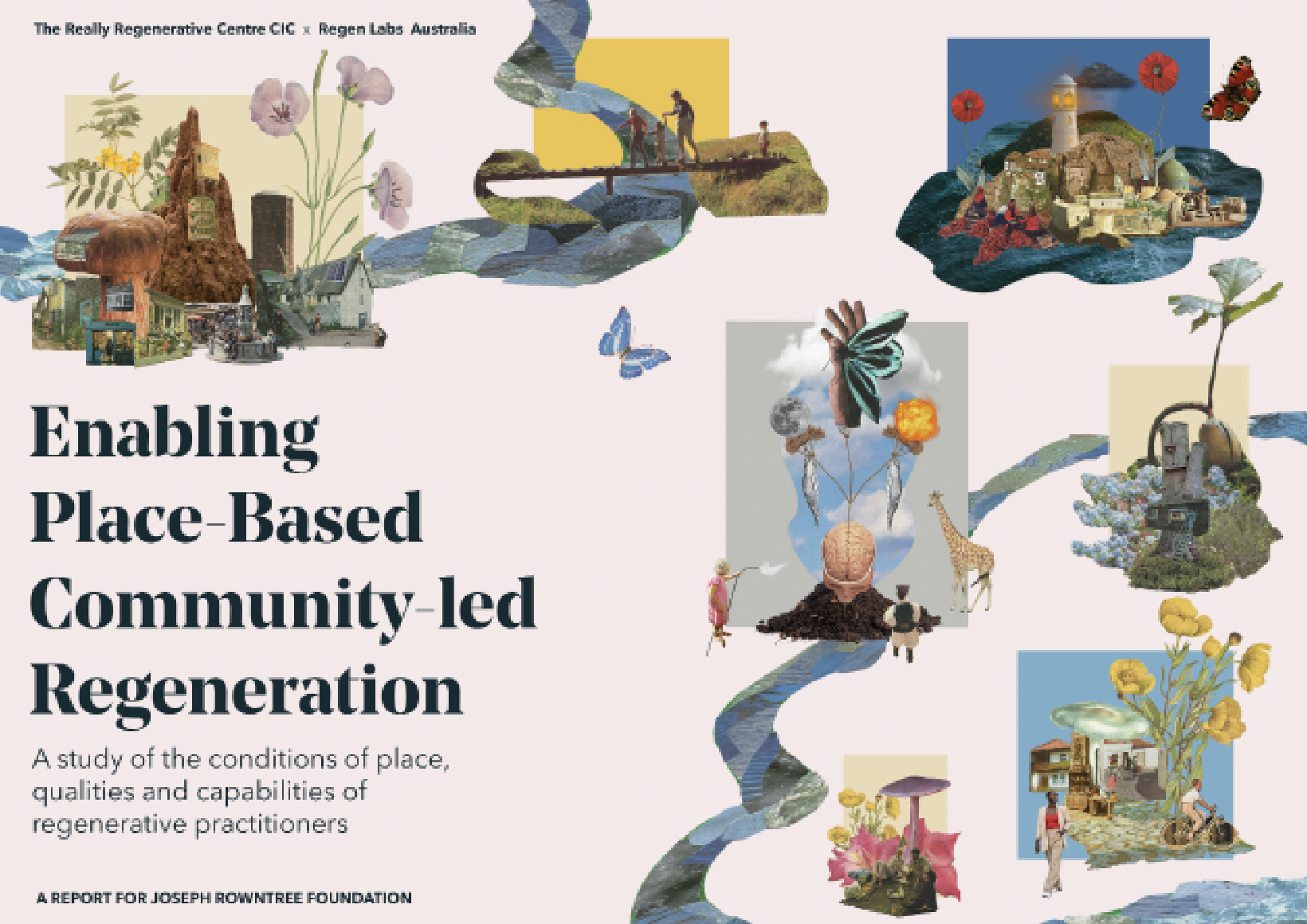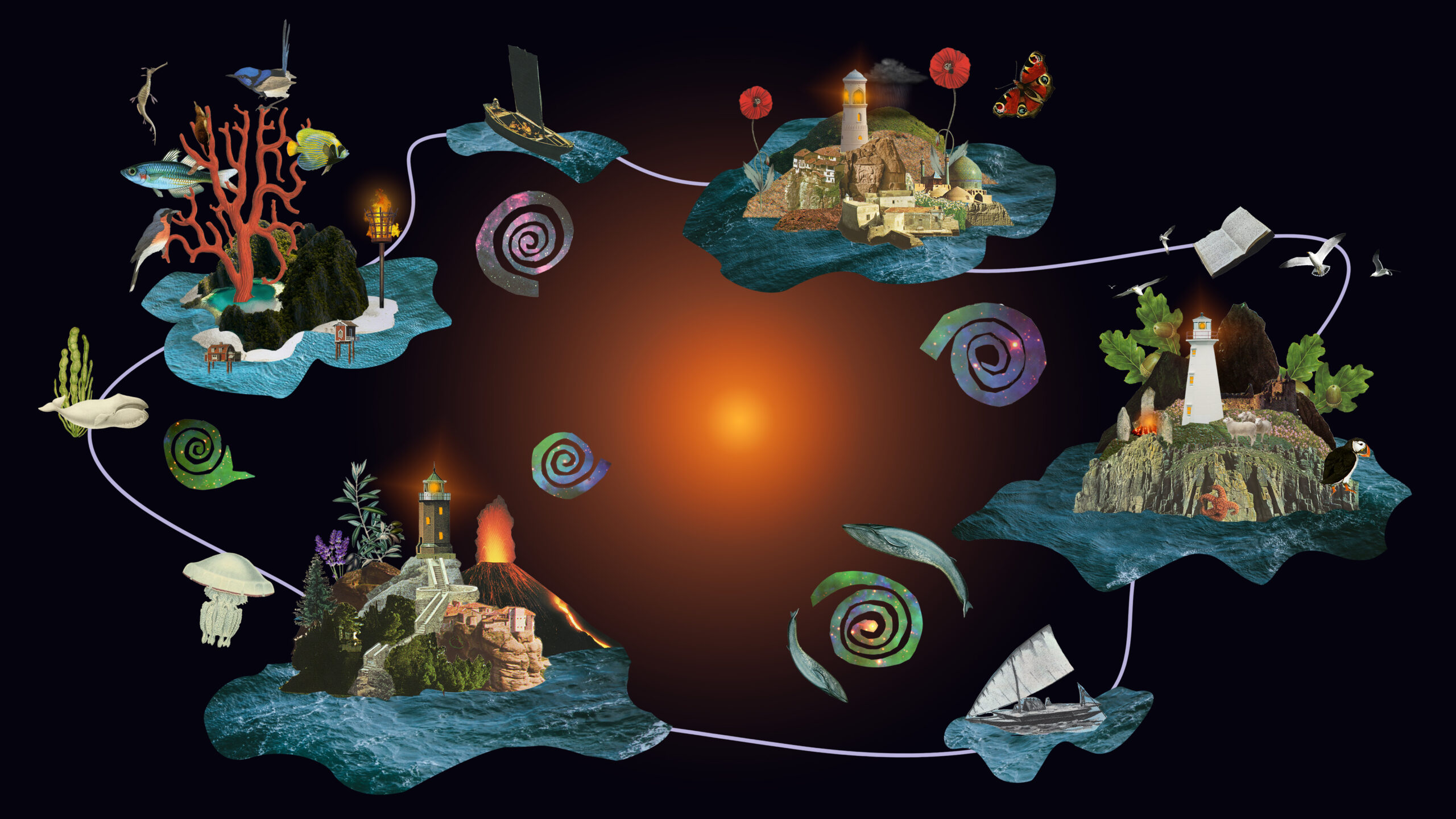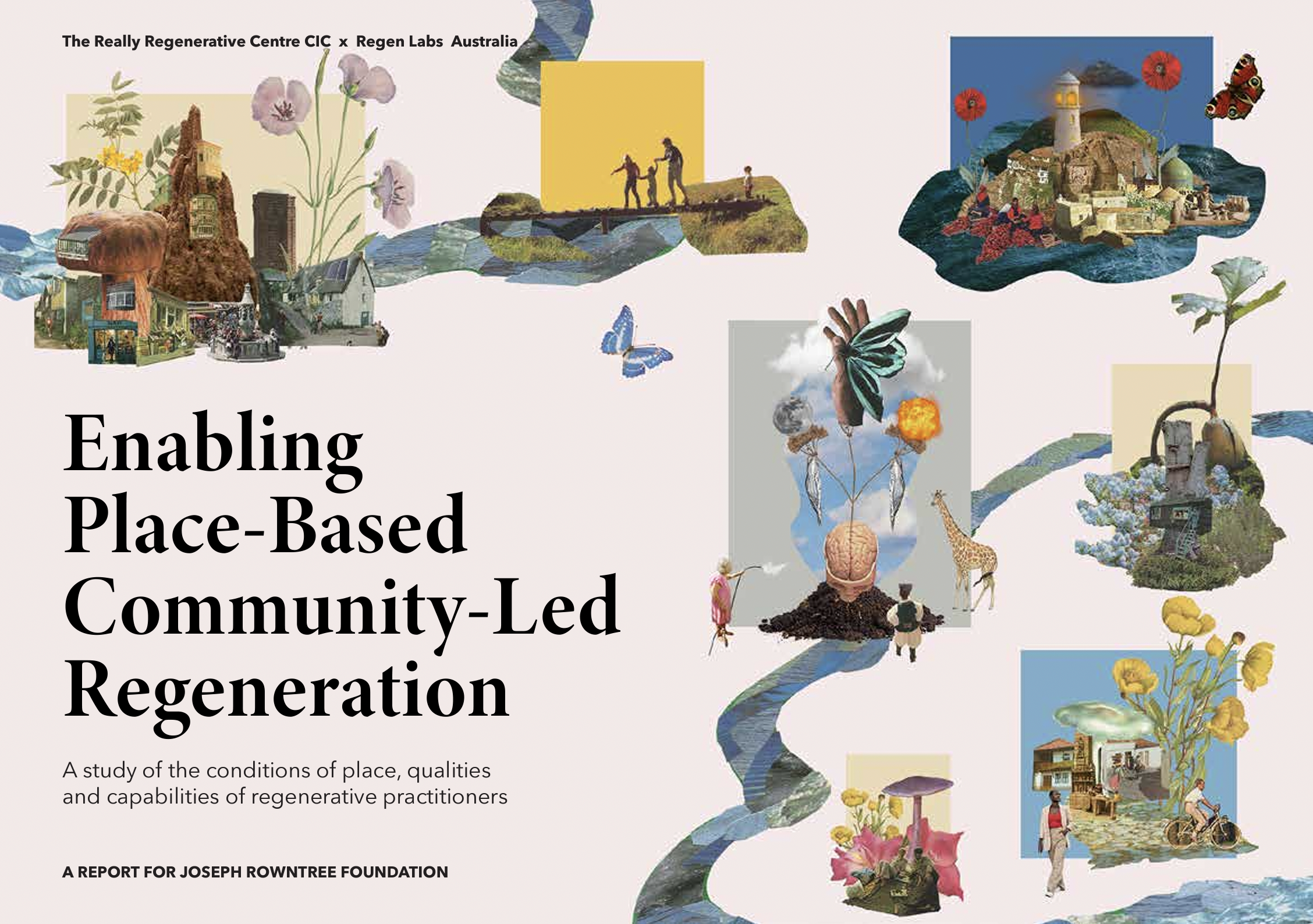Place-Based Community-Led Regeneration
Philanthropy’s role in creating the conditions conducive to life.
Scroll down to download the full report.


Creating ‘islands of potential’.
This study identified many ‘islands of coherence’ that could be better enabled to accelerate the potential of place-based community-led regeneration including:
- Place ‘ready-ness’ to engage in transformative systemic work is determined by the cultural scaffiolding in place.
- Centres for Life – whether they are social movements or physical entities which culturallly support and exemplify future potential – are essential to encourage other courageous efforts.
- Capacity building in regenerative work through communities of practice, place and system but under-funded and often inaccessible
- At the same time, we acknowledge that widespread capability exists but there are gaps in deep ecological knowledge; pattern, economic and financial literacy; systems see-ing and nodal acupuncture
- Place-centric individuals play critical roles as pioneers, trust-builders, futurists, visionaries and field builders but these roles are often unrecognised and under-funded which can reinforce privilege or encourage hardship.
How cultural scaffolding showed up in this work:
Capacity to discern – a detailed understanding of place with an intuitive and developed ability to respond to the level of ready-ness
Time, cost and capacity – it takes significant time to build the relationships of understanding across a place/system
Development of place-based anchor institutions – where significant systems knowledge, participatory processes and regenerative design was present in anchor institutions, the work accelerated
Plural approaches – the potential of regeneration is amplified by a plurality of approaches being present across sizes of ‘scapes’ and types of engagement.
Donor and funder education – where donors and funders had engaged in regenerative learning and development themselves, their commitment and participation was evident.
Centres generate and regenerate the energy field in a place and system, supporting emerging regenerative fields to develop and sustain in the long term. They can anchor local work and act as long term support networks, archives and ‘lighthouses’ for inspiration. Centres can respond closely to place, helping bring to life bio-cultural uniqueness.
How Centres for Life showed up in this work:
✔ Educational learning centres – from places like the former Schumacher College, to online programmes, emergent academic programmes, MOOCs and living labs.
✔ Innovation Lighthouses of the Future as centres – whilst common in entrepreneurial hubs, a place-based regenerative iteration is beginning to emerge. Atelier Luma and Regen Labs are good examples.
✔ Socio-Cultural Centres such as communites of place and practice – because this work is too complex to do alone
Atelier LUMA in Arles – one of our contributors to this study.

Creating ‘fertilising flows’.
This study identified many ‘islands of coherence’ that could be better enabled to accelerate the potential of place-based community-led regeneration including:
- Philanthropy as catalyst of systemic investment’ – there is growing interest in systemic investment but philanthropy has a role to play to in the shift to systemic of sticking-plaster single-issue work which arrests disorder but does’t create the conditions for systemic shifts.
- Philanthropy to support a stronger focus on creating enabling conditions of place – investing in building political will, cultural scaffolding and acupuncture moments and opportunities and field building.
- Philanthropy to play a role in democratising access to regenerative design and learning through partnerships with existing and emergent organistions
- Philanthropy to invest in supporting the emergence of Centres for Life that are place-based, and bioculturally appropriate
- Philanthopy to invest in place-based individuals and pioneering innovations at the level commensurate with the ambition of creating systemic transformation based on deep relationships of trust, discovery, learning and dialogue.
WATCH THE LAUNCH RECORDINGS FROM EU/ASIA/AMERICAS and AUSTRALASIA/FAR EAST.
DOWNLOAD THE FULL REPORT
With grateful thanks to all our wise and wonderful contributors.
To everyone who participated in this work, we signal our appreciation of your knowledge, wisdom and time. Thank you. To those of you who agreed to be mentioned and who have been of great help, we acknolwedge our thanks and gratitude below. To those of you who wished to remain privte individuals and organisations, thank you too. We could not have accomplished this without your help.
Eureka Khong, Daniel Christian Wahl, Tobias Luthe, Peta Milan, Willow Berzin, John Fullerton, Oscar Gussinyer, Erika Zarate, Brandon Letsinger, Joe Brewer, Penny Heiple, Gita Goven, Jan Boelen, Tim Crabtree, Melina Angel, Eduard Muller, Joke Quintens, Noa Lodeizen, Karin Muller, Jerome Partington, Heiko Specking, Toby Lowe, Alice Howard-Vyse, Kiran Kashyap, David Kaldor, Jessica Robbins, Andrea Lane, Sarah Tate, Alex Lieb, Kaj Lofgren, Nicole Barling-Luke, Reece Proudfoot, Gary Wallace, Rajiv Khanna, Liz Ogbu, Samantha Powers, Nui Sirikul Laukaikul, Sarah Queblatin, Sarah Ichioka, Bill Reed, Sara Swart, Laura Ortiz Montemayor, Madeleine Kate McGowan, Joel Hooper, Michael McEilligot, Delfin Montanana, Natalie Egleton, Jo Taylor, Jasmine Daly, Rhae Kendrigan.
Bioregional Weaving Labs, Atelier LUMA, The Danish Co-Living Association, The Cascadia Bioregion, Design School for Earth Regeneration, Regen Sydney, Regen Melbourne, FLOAT, Thousand Currents, Boston Ujima Project, The Green School, Regenesis Group, Hobart City Council, the Mumbai Doughnut, Isla Urbana, Regenerative Chanthaburi, The BioFi Project, the Capital Institute, UBS, Philea, Avno, Cohabitas, the Phoenix, Saettedammen, Jystrup, NXT, Wetopia, North Sea Thriving, Resilience Earth, Green Relief, Bioregional Asia,WWF Australia, WWF Cymru, WWF Australia, Regen Labs, Ingrained Foundation, Puhinui FRRR, eArthala, The Beach, Wildemanbuurt Project, Regenerative Communities.

